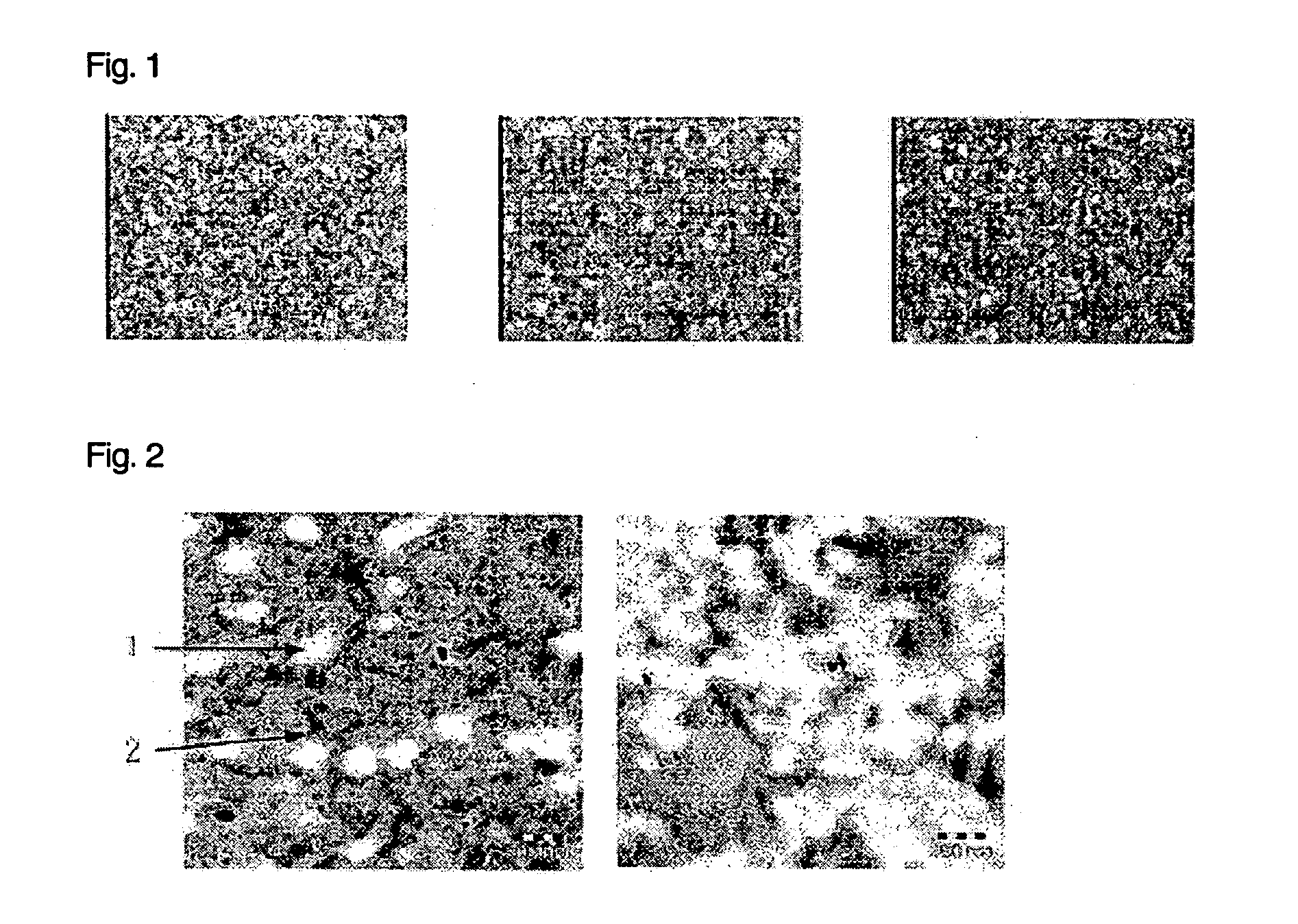Thermosetting Water-Based Coating Composition and Method of Forming Coating Film
- Summary
- Abstract
- Description
- Claims
- Application Information
AI Technical Summary
Benefits of technology
Problems solved by technology
Method used
Image
Examples
production example 1
PRODUCTION OF HYDROXY- AND CARBOXY-CONTAINING WATER-SOLUBLE RESIN (A)
[0173] Thirty-five parts of propylene glycol monopropyl ether was placed into a flask and heated to 85° C., and a mixture of 30 parts of methyl methacrylate, 20 parts of 2-ethylhexyl acrylate, 29 parts of n-butyl acrylate, 15 parts of hydroxyethyl acrylate, 6 parts of acrylic acid, 15 parts of propylene glycol monopropyl ether, and 2.3 parts of 2,2′-azobis(2,4-dimethylvaleronitrile) was added dropwise to the flask over a period of 4 hours. After completion of the addition, the resulting mixture was aged for 1 hour. Subsequently, a mixture of 10 parts of propylene glycol monopropyl ether and 1 part of 2,2′-azobis(2,4-dimethylvaleronitrile) was further added dropwise to the flask over a period of 1 hour. After completion of the addition, aging was performed for 1 hour. The aged mixture was neutralized with 7.4 parts of diethanolamine, to thereby obtain a 55% solution of water-soluble acrylic resin (A-1) having a weig...
production example 2
PRODUCTION OF ACRYLIC EMULSION RESIN (D1)
[0174] Seventeen parts of methyl methacrylate, 80 parts of n-butyl acrylate, 3 parts of allyl methacrylate, 1.2 parts of 60% ammonium polyoxyethylene alkylbenzene sulfonate (tradename “Newcol 562SF”, product of Nippon Nyukazai Co., Ltd., surfactant), and 94.3 parts of deionized water were mixed to obtain emulsion a. Separately, 15.4 parts of methyl methacrylate, 2.9 parts of n-butyl acrylate, 5.9 parts of hydroxyethyl acrylate, 5.1 parts of methacrylic acid, 0.52 parts of 60% “Newcol 562SF”, and 39 parts of deionized water were mixed to obtain emulsion b.
[0175] Deionized water (144.5 parts) and 60% “Newcol 562SF” (1.2 parts) were added to a flask, mixed together by stirring under a nitrogen stream, and heated to 80° C. Thereafter, 1% of emulsion a and 5.2 parts of 3% aqueous ammonium persulfate solution were added, and the resulting mixture was maintained at 80° C. for 15 minutes. The remainder of emulsion a was added dropwise over a period ...
production example 3
PRODUCTION OF ALUMINUM FLAKE DISPERSION
[0176] Forty parts of propylene glycol monopropyl ether and 15 parts, on an aluminum solids basis, of “Alpaste 7679NS” (tradename, product of Toyo Aluminum K.K., a mixed paste of non-leafing aluminum flakes, dispersant (oleic acid), and mineral spirit) were mixed together by stirring, to obtain aluminum flake dispersion (i).
PUM
| Property | Measurement | Unit |
|---|---|---|
| Temperature | aaaaa | aaaaa |
| Percent by mass | aaaaa | aaaaa |
| Percent by mass | aaaaa | aaaaa |
Abstract
Description
Claims
Application Information
 Login to View More
Login to View More - R&D
- Intellectual Property
- Life Sciences
- Materials
- Tech Scout
- Unparalleled Data Quality
- Higher Quality Content
- 60% Fewer Hallucinations
Browse by: Latest US Patents, China's latest patents, Technical Efficacy Thesaurus, Application Domain, Technology Topic, Popular Technical Reports.
© 2025 PatSnap. All rights reserved.Legal|Privacy policy|Modern Slavery Act Transparency Statement|Sitemap|About US| Contact US: help@patsnap.com


